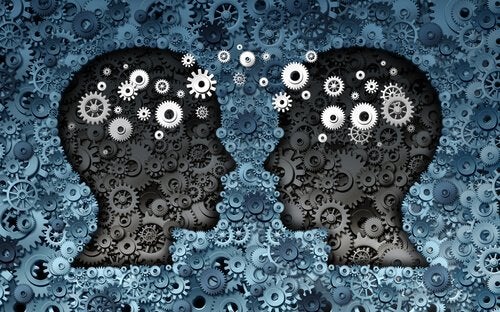Solution-centric therapy is a type of intervention that aims to focus on solutions, far beyond the problems themselves, in this way, it is based on observing the solutions that have been used so far for the problematic situations that arise. aims to explore alternatives not yet considered and therefore obtain new results.
We can define solution-based therapy as the art of generating solutions to insoluble problems through ordinary, routine and accessible logic, so in many cases principles that can go against common sense are used, characteristics that offer previously inaccessible possibilities. because they were hidden in the person under strict patterns.
- Solution-based therapy says we don’t need much knowledge about the nature of problems to solve them.
- Customers really want to change and have the resources to do so.
The goal of this therapy is to find a new solution to the problems that we already have or are repeating, the idea is to use rational, logical and analytical thinking to solve problems.
As this is done, it is achieved by setting explicit therapeutic objectives, studying previous attempts at a solution, seeking information on exceptions (times when the problem should arise but not), looking for alternative solutions and applying new solutions.
“As therapists we have a very clear duty. First, achieve clarity within ourselves, look for any signs of clarity in others, and support and strengthen them in all that is healthy for them. -Gregory Bateson-
All problems have solutions: this is the first premise of this theory. We often insist on solving a problem the same way each time, even if it doesn’t work. There is even a saying that man is the only animal that stumbles. twice on the same stone.
Cognitively, going further and looking for solutions other than the first ones that appear in our minds or that involve actions different from those we are used to or different procedures than those we have developed so far has a very high cost. That is why we insist, on the implementation of certain resolution strategies, even if they are not satisfactory.
On the other hand, if we ask a group of people what the solutions to a problem are, we will surely have as many solutions as there are people, demonstrating the variability of possible answers that exist.
In many cases, unrthodox and informal solutions can arise and ideas may even arise without direct connection to the problem, but it’s okay, people with the same problem can try several different solutions, because what matters is the solution, not the problem, we can try. as many solutions as we want, until we’re right.
The emphasis is on identifying what works, always with the aim of working to apply these action sequences to the solution, then the attention of the process of this therapy is on what has already been tried as a solution and in exceptions?The problem would theoretically appear, but they don’t show up. Identifying what is happening differently may show a possible solution.
Solution-based therapy focuses on current, past and future problems, analysis is based on the problems we are currently experiencing, but analyzing the origin of these problems can lead us to create ways of acting, with alternatives always being the focus.
However, don’t forget that each person has the elements and skills to solve their problem individually, you don’t ask for anything from someone you can’t do, any solution that has been tested but that hasn’t worked doesn’t look like a mistake, but as a learning and improvement possibility.
“The spotlight is not the problem, but the solution. “- Nardone-
The solutions are applied by the person who has the problem and, therefore, it is your responsibility to make the different attempts until you come up with an optimal solution. The psychologist will never change a person’s reality, only he can change his life, intervene in his world and finally transform his own situation.
In addition, the situation must be analyzed in a specific context of interactions, in this way a change in one person mobilizes the rest of the members of a system, so it is important to map and understand the contact between the different members involved. in the problem.
The therapeutic relationship will always be a relationship of respect and equality, therapists adopt a spectator posture, someone who looks from afar, is understood by respect to observe and analyze the solution of the problem on an equal footing with the patient, given the importance of this monitoring and the use of a common and non-scientific language to establish a relationship based on a global dialogue.
It is important to remember that the therapist does not maintain a position of specialist that must provide the solutions, the therapist plays a role of accompaniment of the process, in this context the therapy is established as a communication process or a language game, that is, that it is based on a dialogue and that the client or patient and therapist are exploring solutions to a problem. It is also based on a set of meaning constructs, as both participate in a continuous process of meanings of everyday events.
Solution-focused therapy has already been applied in different contexts, it is effective especially when we talk about people who have repetitive behaviors and who have problems to solve, not forgetting those who have specific and specific problems, and who resist traditional or protocol interventions. .

